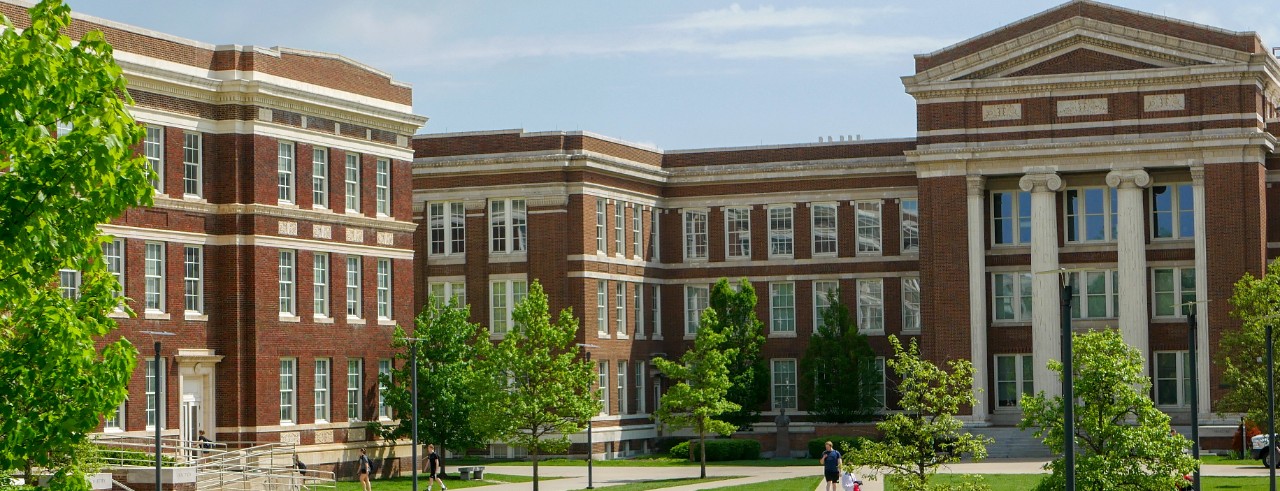
UC helps high schoolers earn physics credit
Engineering and construction partners sponsor pilot program for students interested in STEM
With the help of two local companies, 11 Cincinnati high school students earned a physics credit in just six weeks this summer through a new online physics course launched by the University of Cincinnati College of Engineering and Applied Science in partnership with Cincinnati Public Schools.
Messer Construction Co. and structural engineering firm Schaefer sponsored the pilot program. Schaefer has committed to sponsor the course for four more years.
The college’s Office of Inclusive Excellence and Community Engagement established the program with the district to address two challenges:
- Not all Cincinnati Public Schools are able to offer physics to all students.
- Not all families know how beneficial taking physics in high school can be for students.
Physics is required for admission to many science, technology, engineering and math (STEM) programs at UC and most other institutions.
“When we reviewed some of reasons why students were not getting admitted into the college, the students were missing physics and/or calculus, which are required to be admitted,” said Whitney Gaskins, assistant dean of inclusive excellence and community engagement for the college. "As a CPS partner, I envisioned providing a creative solution to this challenge. The physics course is part of the solution."
[The course] got me interested in things I never thought I would do. Now I am thinking of going into the STEM field.
Natalia Altuzar-Barcenas, tenth-grader, Spencer School for Gifted and Exceptional Students

Natalia Altuzar-Barcenas recently completed the CPS Strong summer physics course offered by UC.
Whether or not a high school student has chosen a major or college, it is important for families to be aware of program requirements as early as possible. Otherwise, students could unknowingly limit their college options and find themselves at a disadvantage if they do decide to pursue a STEM degree.
The new course offers a flexible option for students whose schools or schedules cannot accommodate a physics class. The program aims to empower students to explore STEM, make informed choices for their education and develop skills that will best prepare them for college.
Students like Natalia Altuzar-Barcenas, a sophomore at Spencer School for Gifted and Exceptional Students, can explore career options they had never considered.
“[The course] got me interested in things I never thought I would do,” said Altuzar-Barcenas. “Now I am thinking of going into the STEM field. Before, I was not even sure of what I wanted to do with my life.”
A video of one of Altuzar-Barcenas' experiments from the course is featured below.
The students, who also came from Oyler School and Walnut Hills High School, received a modest stipend to assist with financial concerns, as many students would otherwise be working over the summer.
For both sponsors, the program is an investment in the future of their fields and success of the Cincinnati community, increasing local talent and promoting diversity in STEM.
“We want to be active participants and make our communities better,” said Greg Riley, president of Schaefer. “We believe in this. We think that one thing we can do is to invest in the youth of our community.”
Stanford Williams Jr., vice president and chief inclusion and diversity officer at Messer, stresses the importance of giving back and helping others.
“We should find a way to embrace and meet people where they are and help those who may not have the same opportunities that you may have,” said Williams.
The curriculum focuses on recognizing and applying physics in real life.
“We wanted students to see that physics isn’t highly abstract,” said Don Wittrock, program coordinator for community engagement. “They’re being affected by physics — they just don’t know it.”
He and Brad Ciminowasielewski, a physics instructor at Winton Woods High School, designed projects that students could complete at home and connect their real-world experiences of physics with the laws and formulas in each lesson.
Schaefer hosted a virtual demonstration of a shake table in a workshop on seismic activity and structural engineering. Representatives from both companies met with students to discuss their fields.
Every student in the class now has a physics credit on their high school transcript.
“No matter what the platform, you can still create an environment where students are going to connect,” said Wittrock. “Once they connect, they’re going to succeed.”
Are you interested in sponsoring a program or starting a scholarship in the College of Engineering and Applied Science through your company? Please contact Alina Nosal, Director of Development at alina.nosal@uc.edu or 513-630-6009.
CPS Strong
UC's collaboration with Cincinnati Public Schools reflects its investment in CPS Strong, part of President Neville Pinto’s Next Lives Here strategic direction, which aims to build an inclusive support system for local students to ensure college readiness, expand access and foster success.
Featured image at top: Baldwin Hall and Old Chemistry Building. Photo/UC Creative Services.
Related Stories
UC student breaks world record in competitive speedcubing
December 19, 2025
UC computer science student Sujan Feist set a new world record in speedcubing at competition this month in Coshocton, Ohio. Feist is the reigning world champion in the 2x2 division.
A partnership to end pancreatic cancer
December 19, 2025
Since 2010, BSI Engineering has raised more than $1.2 million for pancreatic cancer research at the University of Cincinnati Cancer Center in honor of a friend and inspiration to BSI’s founders, Bryan Speicher.
Bazinga! UC physicist cracks ‘Big Bang Theory’ problem
December 19, 2025
A physicist at the University of Cincinnati and his colleagues figured out something two of America’s most famous fictional physicists couldn’t: theoretically how to produce subatomic particles called axions in fusion reactors.
